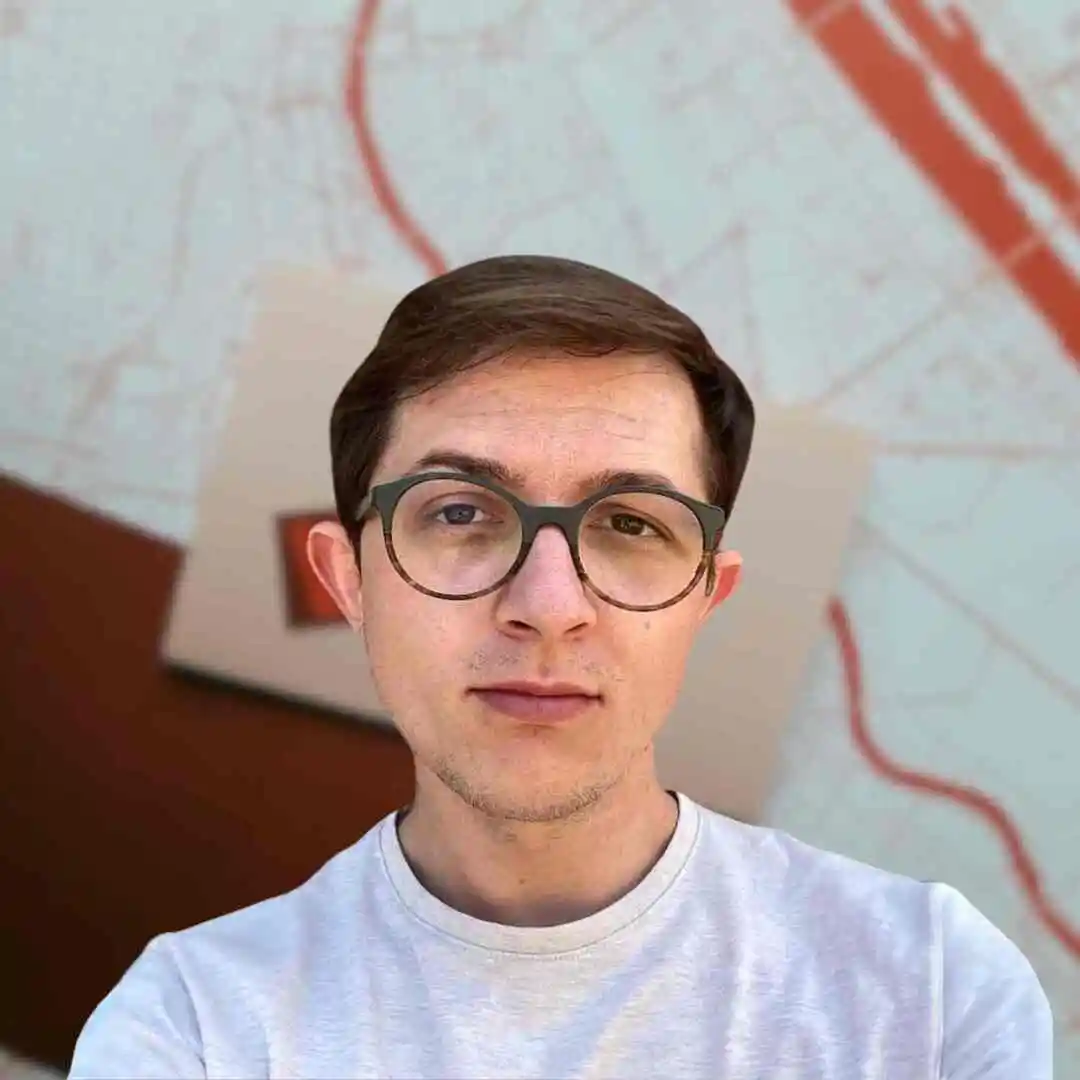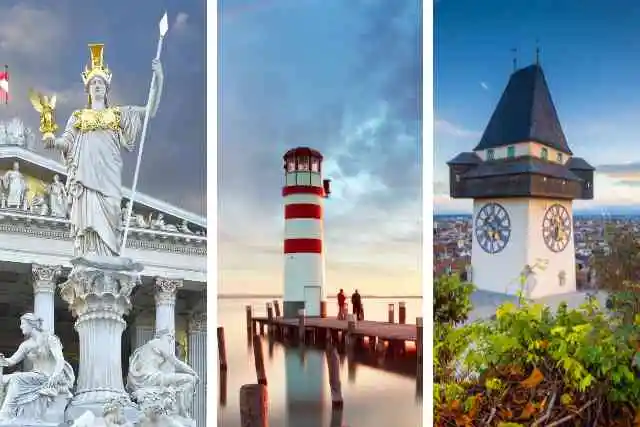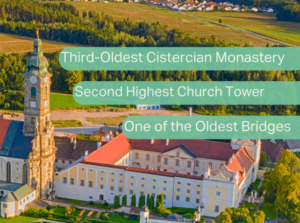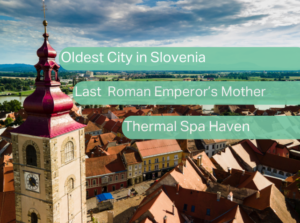Zwettl is a historic town in Lower Austria, known for its rich history and beautiful landmarks. Once a Slavic settlement, it grew into a medieval trade hub. Zwettl is famous for its brewing traditions, old city walls, and the legendary Kuenringer family. The town faced many challenges, including wars and Soviet occupation, adding to its unique past. Explore the history and attractions of this fascinating place!

Book
Austria by Public Transport
Discover Austria like never before with “Austria by Public Transport.” This book is your ultimate guide to exploring the beauty of Austria easily and affordably. Get your copy today and start your adventure!
Coat of Arms
Zwettl received its coat of arms in the 15th century, displaying Austria’s colors and eagles similar to those on the Lower Austria flag. The design of Lower Austria’s coat of arms has changed over time, making it look slightly different today, though still quite similar.

Name
The name “Zwettl” comes from a Slavic word meaning “glade” or “clearing in the forest.”

Gallery
Explore Zwettl with the free Hearonymus app! Download it from Apple AppStore or Google Play to enjoy a detailed audio guide. Since the app is available, we won’t cover the full details on the blog!
App






Slavic Roots of Zwettl
Zwettl, in the scenic region of Lower Austria, holds an intriguing mystery. Researchers believe that Slavs once lived in this area, and the town’s name reflects this. However, the exact site of the original Slavic settlement remains unknown. Zwettl first appeared in historical records in 1339, but it was already considered a town by 1200. The powerful Kuenringer family likely founded Zwettl.
Legend of the Rulers
In the 13th century, the Kuenring family, living in the castles of Waldviertel, was very wealthy but liked to expand their riches by robbing people. The two most notorious brothers, Hadmar III and Heinrich I, were known as the “dogs of the Kuenrings.” Sailors on the Danube feared them, as Hadmar would block the river near his Aggstein Castle and rob passing ships.
To stop these raids, Duke Frederick II decided to act. He first captured Zwettl, where Heinrich was staying, but Heinrich fled to his brother at Aggstein. The castle was impenetrable, so the duke used cunning. A merchant named Rüdiger filled his ship with valuable goods and hid soldiers on board. When Hadmar fell into the trap, he was captured and taken to Vienna.
Hadmar was released but had to compensate for the damage he had caused. A few years later, he died during a pilgrimage to Passau.
The legacy of the Kuenrings still exists in Austria in the form of the towns they ruled. The House of Liechtenstein continues to use heraldic elements of this great family in their coat of arms.

Subscribe
Explore Vienna like a local and discover nearby treasures.
Join our mailing list!
A Town with Fortifications
Zwettl was located on the edge of different regions, and its strategic position made it an important and wealthy town. It was built along key trade routes, which helped it grow quickly and prosper. However, its wealth also made it a target for invaders. The town’s strong fortifications were often useful in defending against attacks. Today, most of the town walls that are still standing date back to the 15th century. Originally, Zwettl’s walls had three gates and nine towers. The town was unsuccessfully besieged by the Hussites in the 15th century, but in 1618, it fell to Czech forces. A few years later, in 1645, the Swedes conquered Zwettl. Then in 1741, the town suffered serious damage during an invasion by French and Bavarian forces.
Zwettl’s Brewing History
Zwettl has a long tradition of brewing beer, dating back to the Middle Ages. As early as the 14th century, documents mention families involved in brewing. From the 16th century, breweries could be found in Zwettl, and even the Zwettl Abbey had its own brewery by the late 15th century. The town also brewed its own beer, and for several centuries, a municipal brewery and tavern operated on Landstraße.
In the 17th century, there were nine breweries in Zwettl, all owned by local families. They were part of the brewing guild from Weitra, but in 1708, Zwettl gained its own brewing guild, leading to a conflict with the Weitra brewers. The dispute lasted for many years and eventually led to the downfall of both guilds.
Today, the only operating brewery in Zwettl is the Schwarz family brewery, which dates back to 1617. In the 19th century, the brewery was taken over by Karl Schwarz, a brewer from Bavaria. Despite many challenges, including wars, the brewery survived and is now the largest industrial establishment in the region, renowned throughout Austria.
Zwettl’s Emergency Banknotes
After World War I, Austria faced a metal shortage for coin production. In 1920, both the government and local municipalities issued emergency banknotes. Zwettl released notes valued at 10, 20, and 50 heller, while nearby towns like Gerotten-Pötzles issued their own. Though these notes served as temporary currency, some never circulated, quickly turning into collector’s items. Today, these rare notes are highly sought after by collectors.

The Days of Nazi Occupation
In 1938, Nazi Germany annexed Austria. Between 1938 and 1939, authorities forced all Jewish residents of Zwettl to leave the town. Tragically, many of them later ended up in concentration camps and lost their lives. During this period, Nazi forces established a large military training ground near Zwettl. This forced 7,000 people to leave their homes, including the residents of Döllersheim, a nearby village. Interestingly, Adolf Hitler’s grandmother, Anna Maria Hitler, came from Döllersheim, and her grave was located in the local cemetery. Some believe that Hitler wanted to erase all traces of his family’s history, leading to the destruction of this village and its surrounding area. This has fueled many myths about the true reasons behind the creation of the military training ground.
The Hidden History
In 1938, the Nazis created the largest military training ground of the Third Reich near Zwettl, forcing 7,000 people to leave their homes, including the residents of Döllersheim. This place is connected to Adolf Hitler’s family – his grandmother, Anna Maria Hitler, was from the Döllersheim area, and her grave was located in the local cemetery. Hitler, unwilling to remember his family, likely wanted to symbolically destroy these traces, which has led to myths that the training ground was a way to erase his history.
Life Under Soviet Occupation
On May 9, 1945, the Red Army liberated Zwettl from Nazi control. Initially, the residents felt relief that the war had ended, but soon they faced new challenges. Soviet soldiers often treated locals as if they were enemies rather than liberated people. Many suffered from looting, kidnappings, and violence, causing widespread fear. Almost every home in Zwettl housed Soviet soldiers, and the town’s mayor was replaced by Josef Schüller, a local pharmacist. Residents had to adjust to new rules, like setting their clocks to Moscow time, two hours ahead of Vienna. The Soviet army also controlled the local press, making people read communist propaganda.

Over time, the residents of Zwettl were forced to give up their radios, and many former Wehrmacht soldiers were sent to labor camps. Zwettl also faced health problems, including a typhus outbreak in 1945. Life in the town was difficult, and people were afraid to leave their homes, especially at night. Armed Soviet guards patrolled the streets, adding to the fear. The Soviet occupation brought many challenges to the people of Zwettl, who had to survive in a climate of fear, shortages, and uncertainty.


Kordian
Hey, it’s me, Kordian! I spend like 10 to 20 hours on each post just for you. This website is my main source of income. If you enjoy using it regularly, I’d totally appreciate your financial support. Your help means a lot and keeps the content coming. Thanks a bunch!
Hundertwasser Fountain
The main square in Zwettl has a long history that dates back to the Middle Ages. As early as the 11th or 12th century, locals drew drinking water from a well. The square, once called “Unterer Platz,” served as the center of social life and a marketplace for trading food, grain, and animals. In the 19th century, people built a large fountain, and in 1925, they erected a memorial to honor World War I victims, later adding the names of those who died in World War II.
By the early 20th century, the square lost its importance and became a parking area. However, in the 1990s, its renovation began. Thanks to Friedensreich Hundertwasser’s artistic design, a new fountain was created, restoring the square’s former glory as a gathering place for locals.
Hundertwasser
A Visionary Artist
Friedensreich Hundertwasser was a unique artist who loved colors, nature, and curved lines. He believed that everything in the world should be beautiful and colorful, just like his paintings. But let’s start from the beginning!
He was born on December 15, 1928, in Vienna, Austria, and his original name was Friedrich Stowasser. Even as a young boy, he loved playing with colors and shapes, and teachers quickly noticed his extraordinary talent for art. As he grew older, he chose to change his name to Friedensreich Hundertwasser. “Friedensreich” means “realm of peace,” and “Hundertwasser” translates to “hundred waters,” reflecting his deep love for nature, peace, and harmony.
Hundertwasser disliked straight lines and dull, uniform buildings. He dreamed of houses that would be colorful, with irregular shapes, and trees growing within their walls. His belief in staying close to nature led him to design the famous Hundertwasserhaus in Vienna, where trees grow on rooftops and the windows come in different sizes. This colorful house continues to attract tourists from all over the world!
He also loved traveling and visited places like New Zealand, Africa, and many other countries. Always carrying a small box of paints, Hundertwasser painted wherever he went. His connection to nature stayed strong, and he planted thousands of trees, designing houses with rooftop gardens to promote harmony with the environment.
Though mainly a painter, Hundertwasser also worked in architecture and environmental protection. He created posters against Earth’s pollution and fought for a closer relationship with nature. As one of the first advocates for eco-friendly buildings, he believed that architecture should always include greenery.
On February 19, 2000, Hundertwasser passed away during a sea voyage, but his works still inspire people today. In Vienna, you can visit his house, and in New Zealand, you can admire parks that he helped create. Thanks to his vision, the world became a little more colorful and full of fantasy!
Join Our Vibrant Community
Are you passionate about discovering the hidden gems of Vienna and its surroundings? Follow us on social media and become part of our enthusiastic community!
Why Follow Us?
- Exclusive Content: Each post is a labor of love, taking between 10-30 hours to create. We share breathtaking photos, captivating stories, and invaluable tips.
- Stay Updated: Never miss out on exciting events, new attractions, and must-visit spots in and around Vienna.
- Support Independent Projects: We are an independent project, and your follows help us cover the costs of running this page. Your support is crucial!
Your Support Matters!
Every follow, like, and share directly supports our work. It helps us continue bringing you the best content and ensures we can keep this site running. By following us, you’re not just staying informed – you’re helping us grow and thrive.
Don’t miss out! Click the links above and start following us today. We can’t wait to connect with you!





